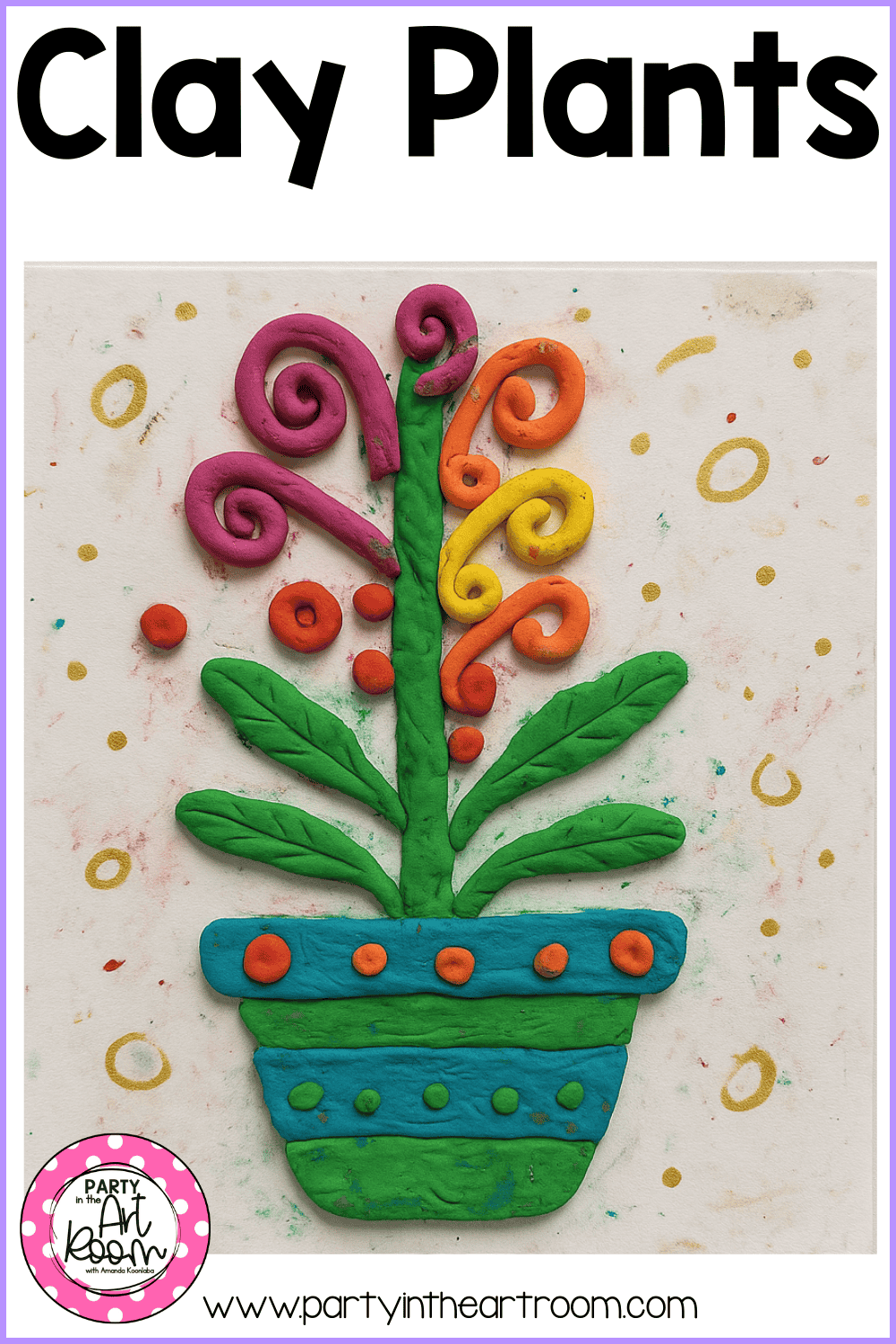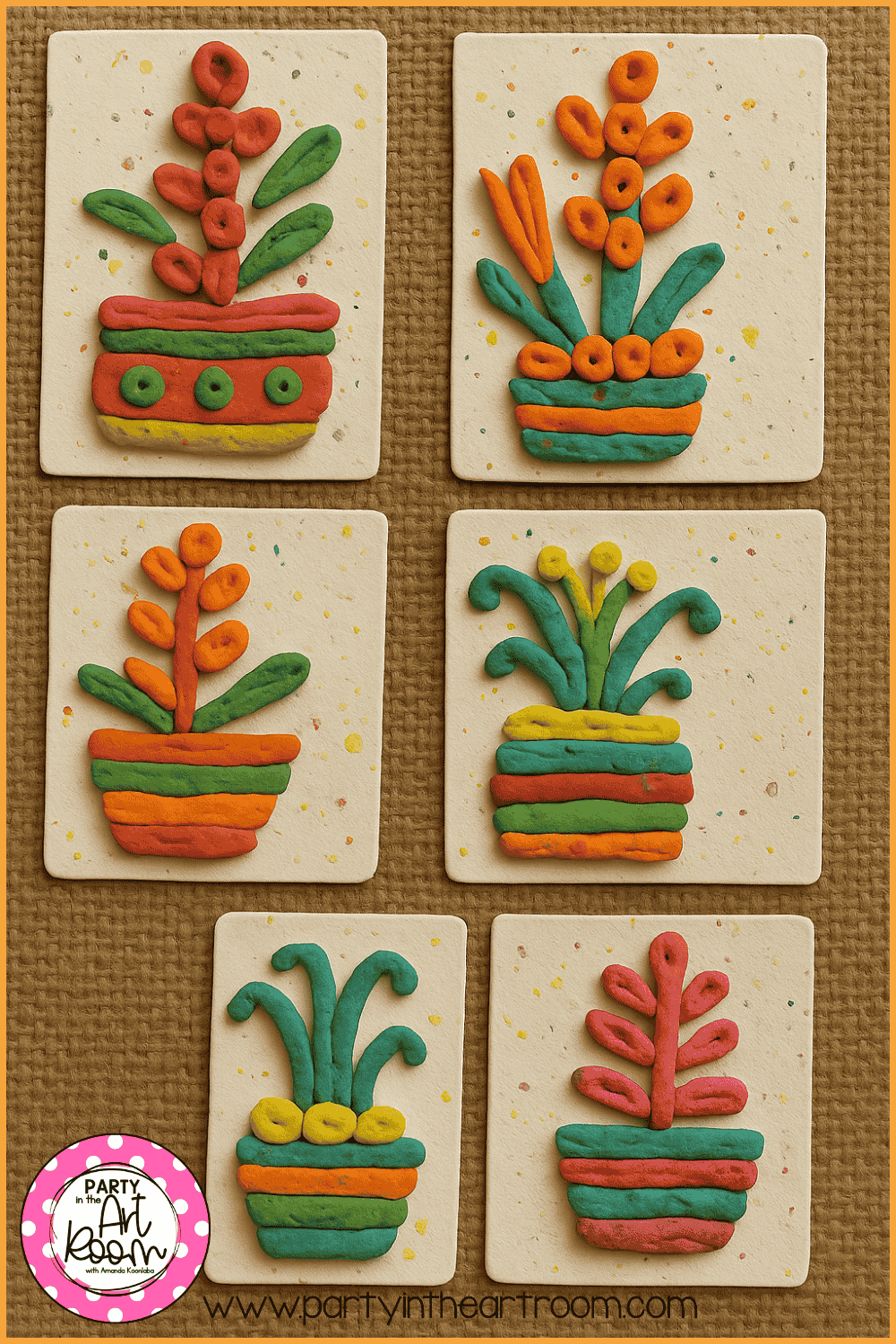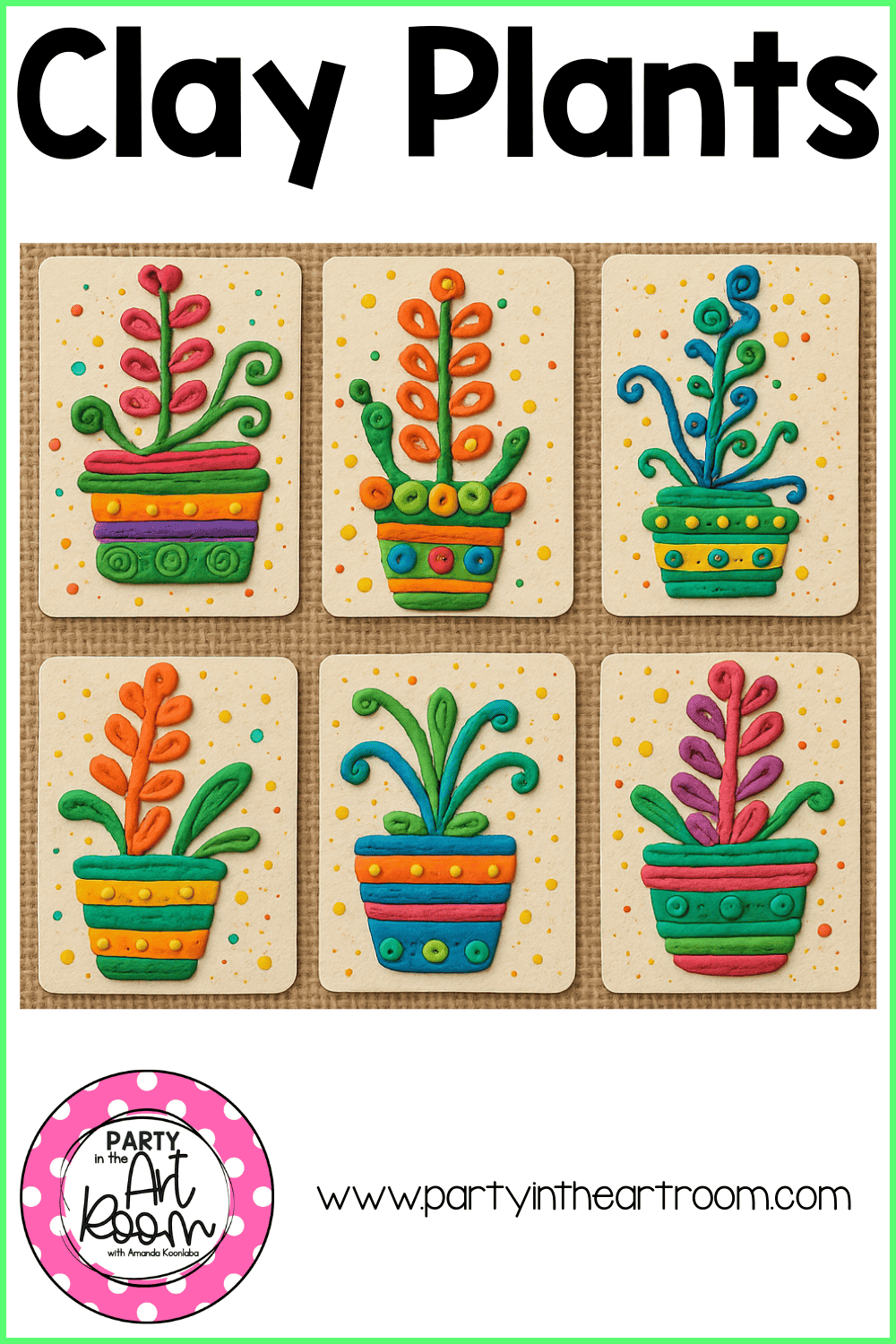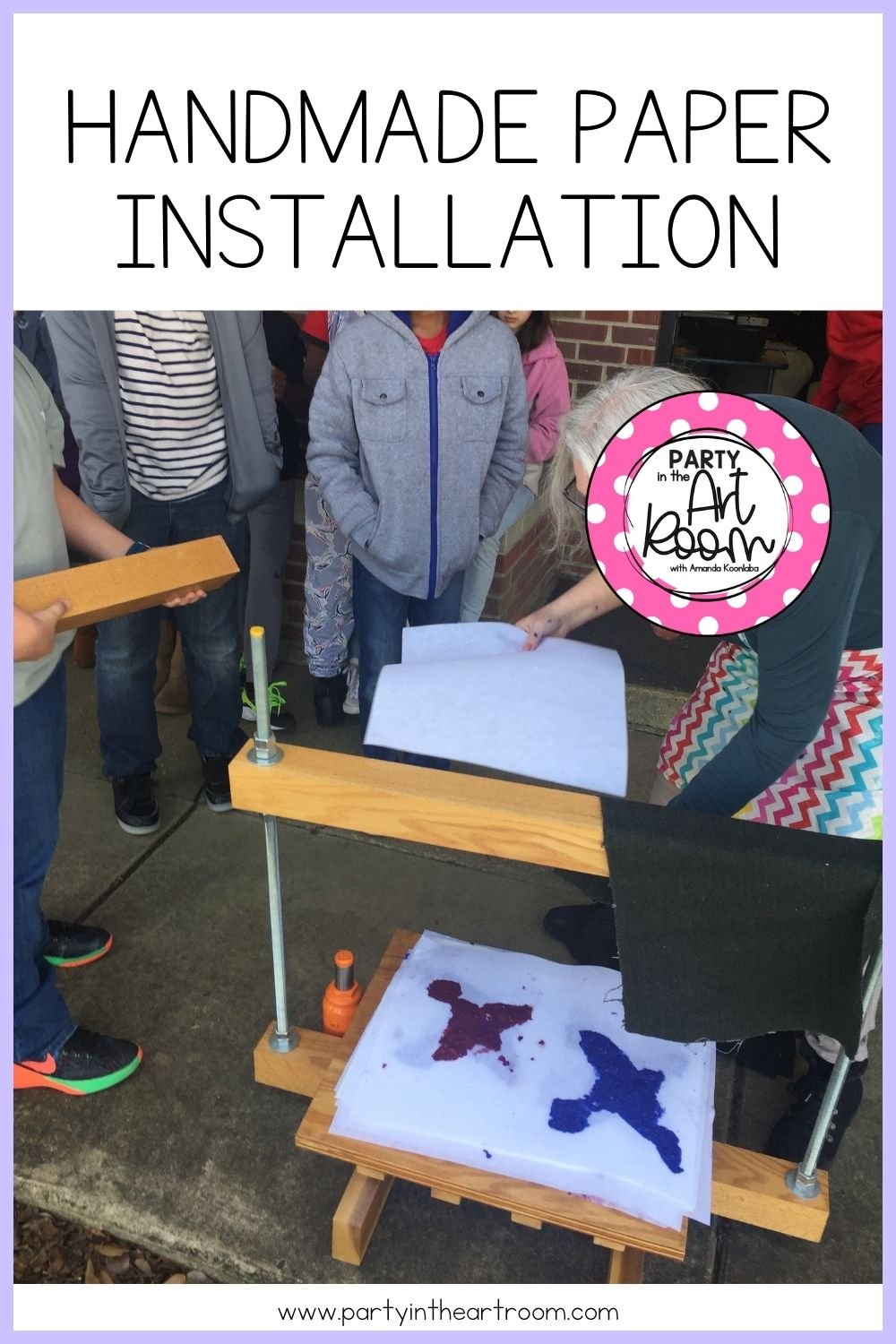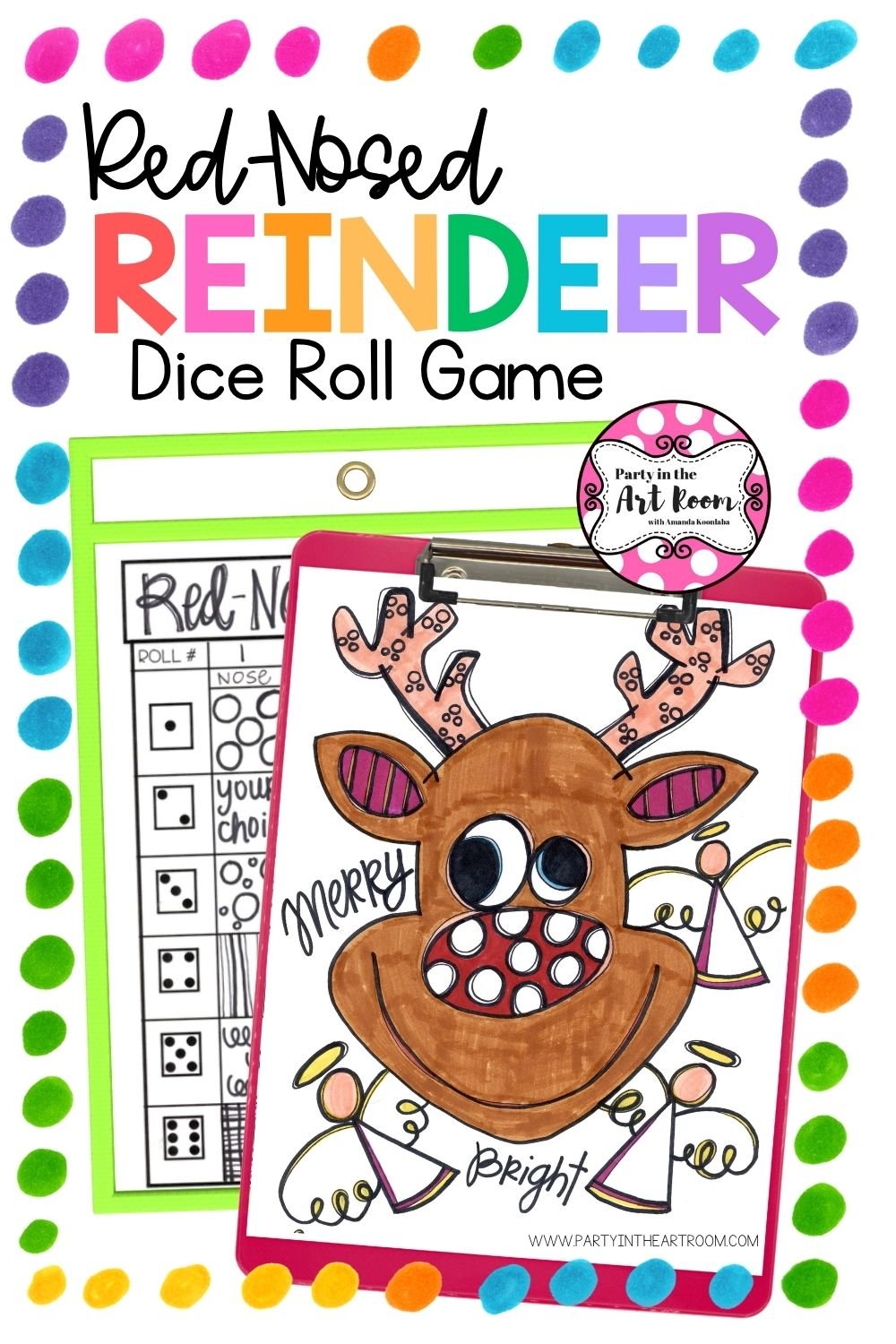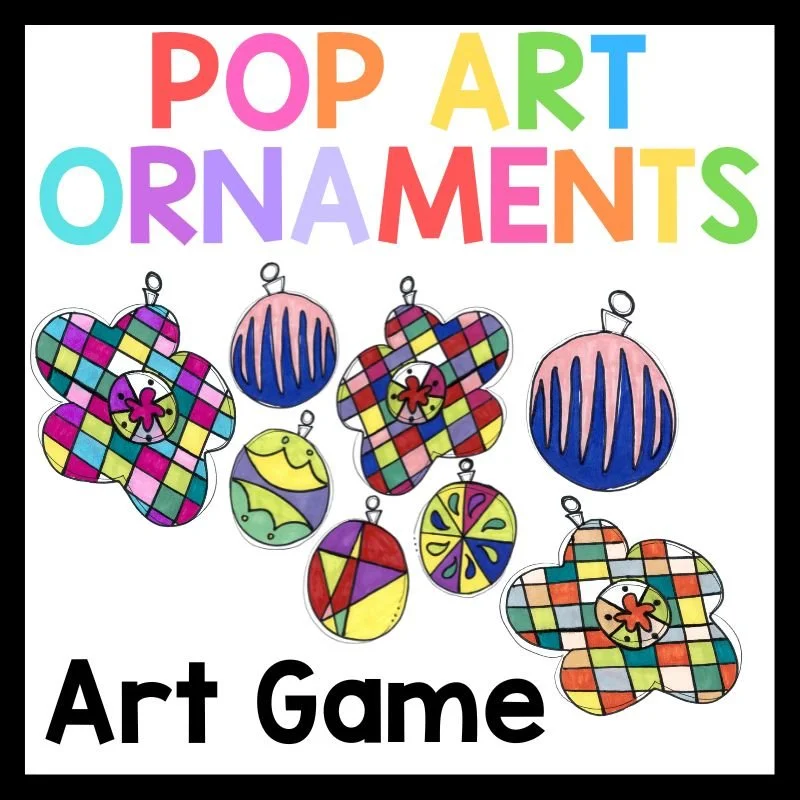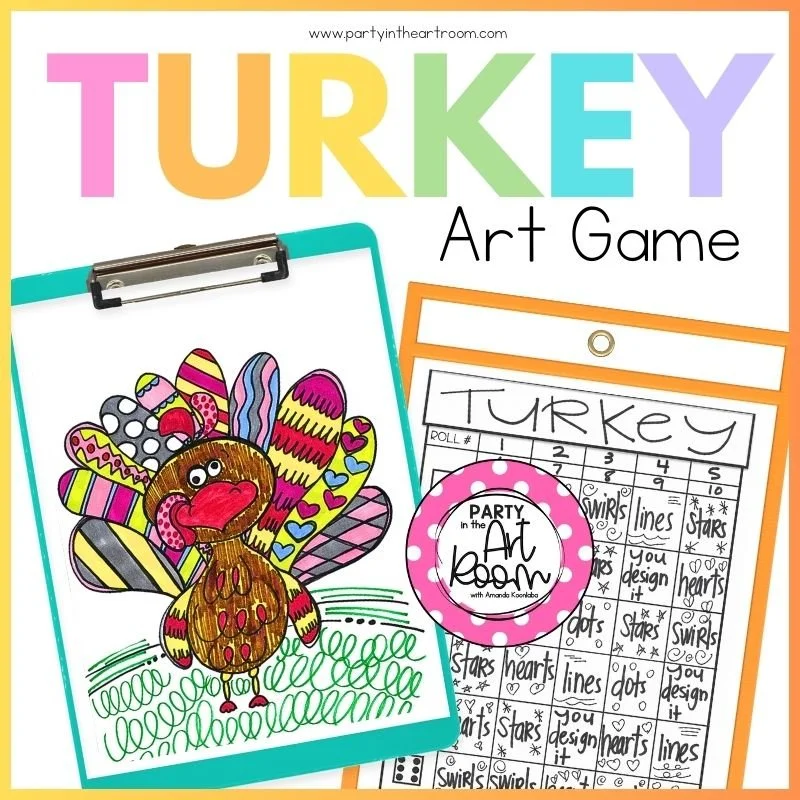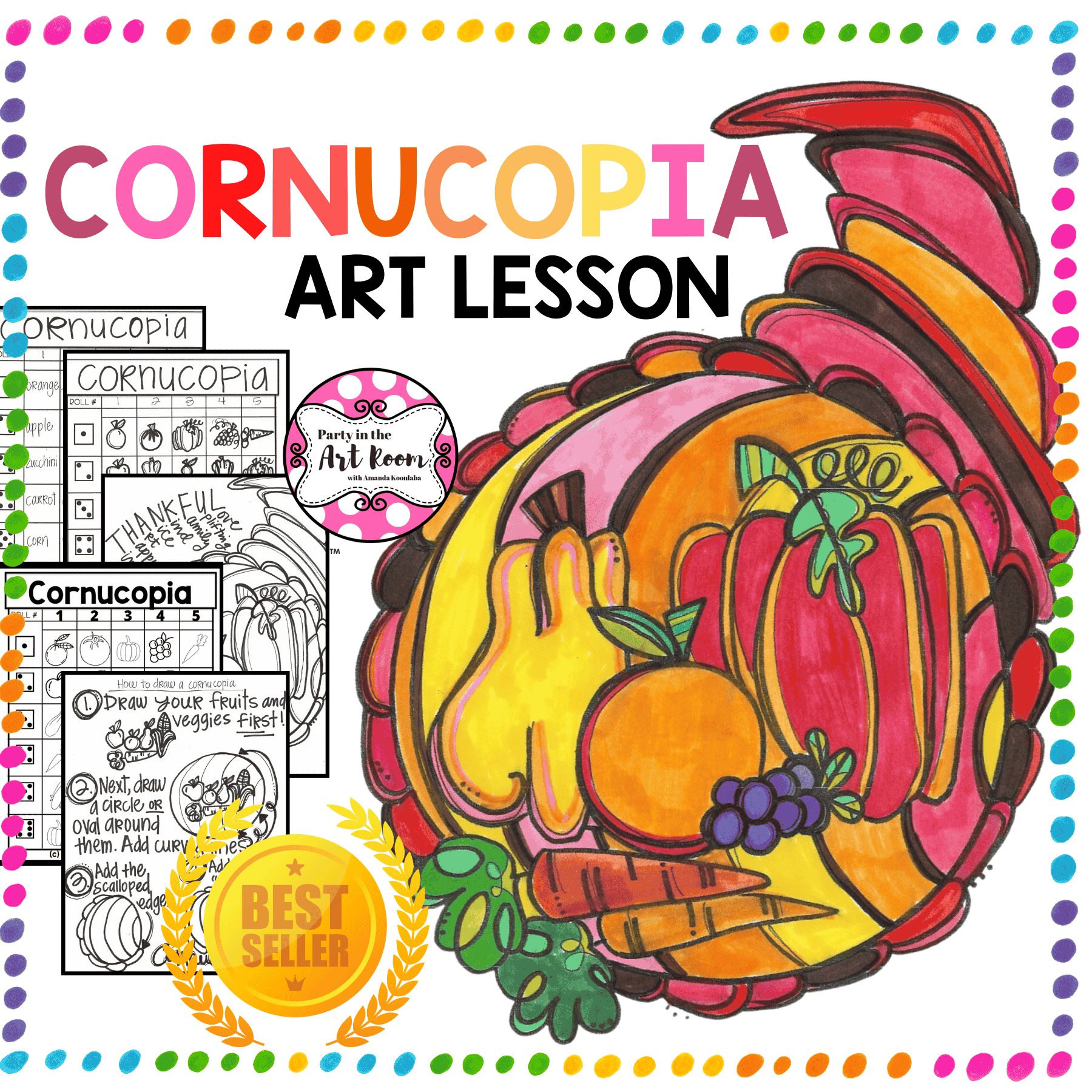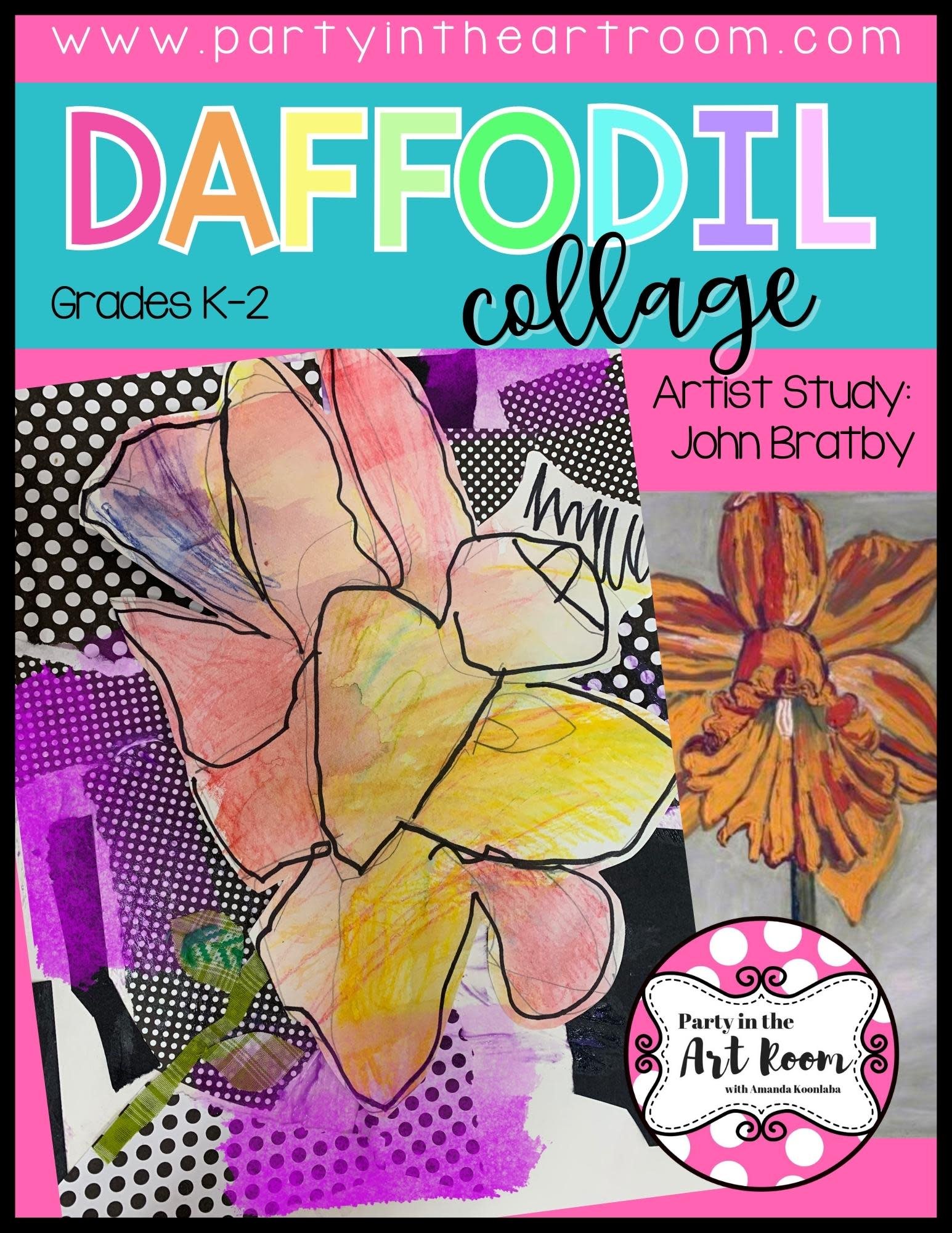Clay Plant Art Project for Kids: A Colorful, Squishy Lesson in Line and Shape
If you've ever watched a kid tackle a brand-new material like modeling clay, you know it's part art, part engineering, and part "oops, let's fix that." This project, making vibrant clay plants on both white tagboard and wood panels, was one of those magical moments where everything just clicked—messy fingers, bright colors, problem-solving, and all.
We didn't start with a sketch. Nope. We dove right in, trusting our instincts and letting the clay do the talking. This meant the students had to think ahead, plan their space, and adjust as they worked. The hardest part? The pot. It’s huge compared to the little curly stems and leaves, and getting it just right without running out of room was a real art-and-math mashup.
Materials We Used:
● Bright colored modeling clay (Crayola Model Magic would work beautifully)
● Wood panels (for a second iteration!)
● Gold paint pens for the background dots
● Tons of baby wipes for cleaning up those colorful, sticky hands!
How It Worked:
Students started by rolling and shaping pieces of clay directly onto the surface. They created swirling lines, bold leaves with textured veins, and colorful dots to fill their plant designs.
No drawing first meant they had to think with their hands, not just their heads. It challenged them to arrange shapes and colors to fit the space without overcrowding or shrinking the whole thing down too tiny.
We started on white tagboard (perfect for learning) and then—for the grand finale—moved onto sturdier wood panels. Same process, bigger wow factor.
Art Concepts Sneakily Baked In:
● Line and Shape: Those swirls, curves, and veins are textbook examples.
● Composition and Planning: No pre-drawing meant real-time thinking and rearranging.
● Texture: The clay itself and the carved details gave the artwork a tactile, 3D feel.
● Color Theory: Look at those rainbow stems! Warm colors just sing against the cooler greens.
Homeschool or Classroom Tips:
● Tagboard works great for practice. Wood panels make it fancy.
● Press the clay firmly but gently to avoid pieces popping off.
● Encourage students to make big shapes first, then add tiny details last.
● Give them permission to "mess up." It's part of the creative process!
If you're looking for an easy, joyful way to bring sculpture into your art room or homeschool space, clay plants are where it's at. They're colorful. They're tactile. They’re slightly chaotic (in the best way). And trust me: when a kid figures out how to fit that giant pot on the page and still leave room for curly vines, it's a full-on mic drop moment.
Want more nature-inspired fun?
Check out the Desert Cactus Color Study Art Lesson for more vibrant, plant-themed art activities!
Love process-driven projects? You'll also enjoy reading about Art Meets Science: Handmade Paper Murmuration for another tactile, open-ended art adventure!
Stay tuned for our wood panel versions—and maybe even a few secret techniques for making those swirls really pop! 🌱
(And yes, you'll want a camera handy for the proud "Look what I made!" moments.)
Final Thought: There's something powerful about giving kids the freedom to jump in without a perfect plan. It reminds them—and us—that creativity isn't about getting it "right." It's about getting your hands dirty, your heart open, and your ideas out into the world. Keep planting those creative seeds—you never know what might bloom!
You Might Also Be Interested In:
Expand Creativity with Symmetry Drawing Worksheets
Dive deeper into symmetry with our specially designed symmetry drawing worksheets. These engaging activities challenge students to complete intricate designs while honing their understanding of symmetrical balance. Perfect for classrooms or homeschool settings, these worksheets make learning symmetry both fun and artistic.
Affiliate Disclosure: Party in the Art Room is supported by its audience. When you purchase through links on this site, a commission may be earned.Hi! I’m Amanda. Teaching children to be creative thinkers is my greatest joy. I’m here to help you bring that same joy to your classroom.
This guide is packed with 25 ideas for using art to teach math and ELA. It’s arts integration for the win!
I want all students to feel successful in the art room, so I created a standards-based Daffodil Collage lesson to do just that! The lesson includes an artist study, student reflection, and more, so push your artists to their full potential.

